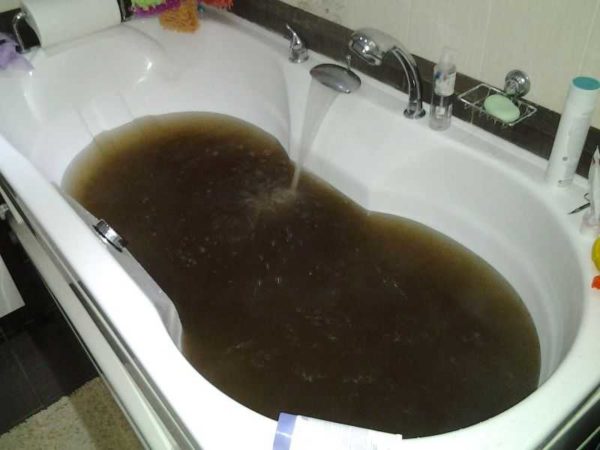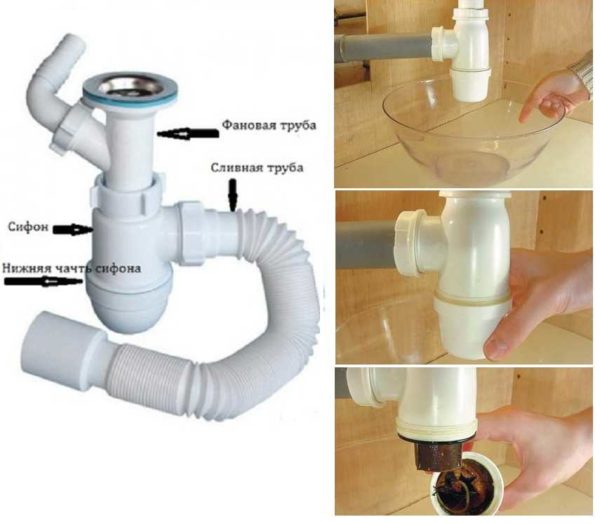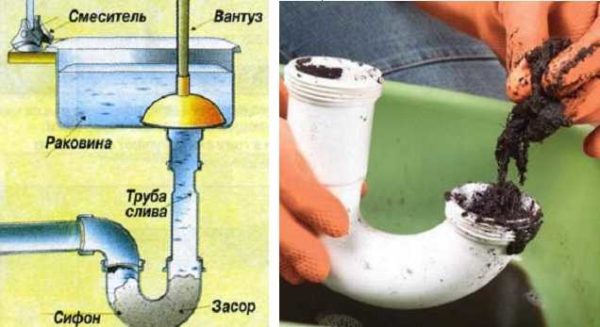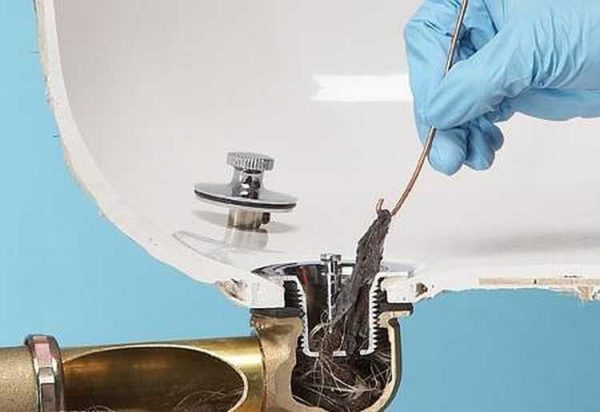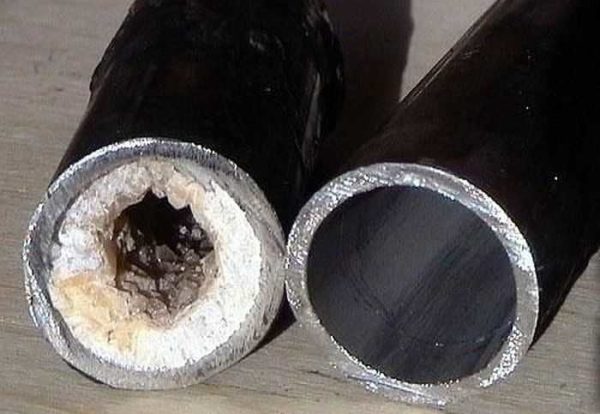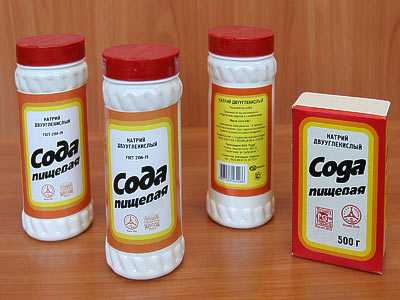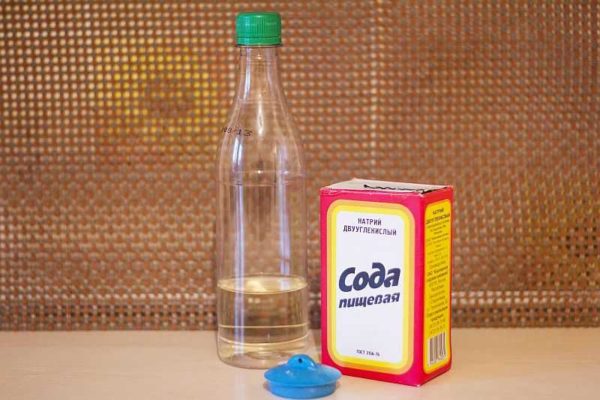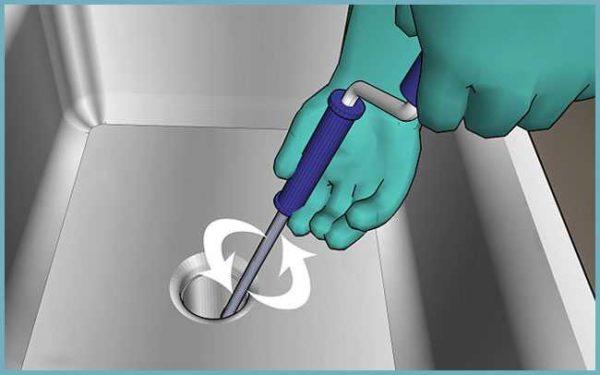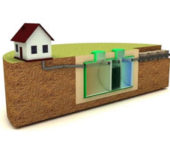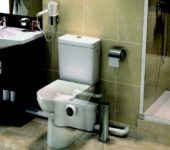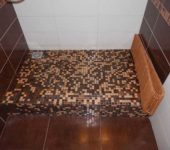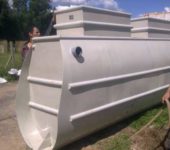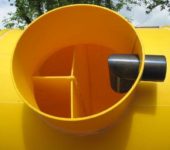How to eliminate sewer blockages yourself
From time to time, we all face a problem - blockages in the sewer. Either the drain in the sink stops working, then in the bathtub, sometimes the water is everywhere. In this case, you can call a plumber, or you can clean the sewer with your own hands.
The content of the article
Where is the blockage
To choose the right method for cleaning the sewer, you need to understand where the blockage has formed. To do this, we drain the water one by one at all points. If the water does not leave somewhere in one place, most likely the siphon is clogged. The second reason is a blockage in the pipe section, before connecting to the main sewer.
If the water does not leave at all, and even overflows from one device to another (you open the water in the sink, it appears in the bathroom or the level in the toilet bowl starts to rise), the general sewer outlet is clogged.
If we are talking about a private house, this is a diversion to a septic tank or a cesspool, if about an apartment - this is a section to the riser or even the sewer riser itself. In the case of a blockage in a riser in an apartment, there may generally be an unpleasant situation - when the upper floors are drained, due to a plug in the sewer, it is poured into yours, rises in the bathroom, toilet. If the situation is like this - call the plumbers - you can't do it on your own, you need powerful equipment.
If the sewage system in a private house is clogged, the first step is to check if the pit or septic tank is overflowing. If the level is not higher than normal, the problem is in the pipes or drain devices.
How to remove dirt in a siphon
The simplest case of a clogged sewer is that only one sink does not leave water. Most often, this problem occurs in the kitchen, a little less often in the bathroom. In this case, it is easiest to clean the sewer system. It is necessary to unscrew the siphon, remove the debris present there, wash the insides with detergent, and put everything in place. If the reason was this, the drain should work.
We disassemble
How to disassemble the siphon at the sink, see the photo. The lower part of the siphon is unscrewed - there is a regular thread. Before unscrewing, substitute some container down - some water will drain. Removing the bottom part reveals contamination. It is also necessary to wash the removed part and clean the one that remained on the sink - there, between the walls, a decent amount of dirt accumulates. We delete everything, clean it up.
The siphon under the bath has a different shape. It is more difficult to disassemble it, but if you do remove it, you will see a dense plug of hair and various plant debris.
In order not to remove the siphon, they usually try to do with mechanical stress. In the picture on the left, you can see what a clogged tub looks like. The main task when removing it is to push the plug further into the pipe so that it goes down the drain. For this, a plunger is usually used - this is a rubber nozzle on a wooden or plastic handle.
How to clean without removing
The plunger is firmly pressed against the drain hole, water is poured into the bath / sink. Next, you need to sharply press and lift the plunger handle up, creating water vibrations that break the deposits and push the residues further. In this case, it is desirable that the rubber part of the plunger fits snugly, without cracks, to the surface of the bath or sink. Then, when it is lifted from the surface (press and pull sharply towards yourself), a sharp jolt occurs, which breaks the plugs best of all.This operation must be repeated until the water goes away without problems, forming a funnel. But even in this case, it is also desirable - for prophylaxis - to clean the sewer using one of the fat-dissolving agents described below.
If some family members have long hair, it is likely that the bath is clogging up. Usually the hair clings to the grate, dirt then adheres to them and all this together blocks the flow of water. In this case, you can remove the grate, make a hook from a piece of wire and fit it in the drain. Most likely, you will pull out something that looks like dirty tow. Gradually, you will pull out everything that has accumulated there, you can wash off the remains.
A blockage in the corrugation
There is another place in our sewage system, in which blockages are most often formed. These are corrugated hoses. Their structure is such that it contributes to the accumulation of all kinds of garbage. If the sink, from which the corrugation comes from, does not work, first check the siphon, then the corrugation. If everything is clean in them, and the water does not leave, the problem is somewhere further, in the pipes.
The corrugation is attractive because it easily adjusts to any length and is easy to assemble / dismantle. So, take it off, clean it, put it in place (you can put a new one in order not to bother with cleaning).
If this "pleasure" does not appeal to you, you can try clean the sewer with chemicals... They cope well with almost all pollution, in any case, they are good until everything clogs up completely.
How to unclog a pipe with home remedies
If it is more or less easy to deal with siphons, everything is much more complicated with pipes. Disassembling them is still a hassle, so few people agree to it. They try to use all available methods - both chemical and mechanical.
Here it must be said that the most reliable mechanical methods are a plunger and a cable. They can deal with any kind of cork - both fatty and classic clogging due to hair or rags. Chemicals, both home and store, are more used for prevention. If you just suspect that the water is leaving a little worse, use chemistry. Will work fine for a while.
If there is already a cork, then after using "fat solvents", it will simply settle on it, turning it into a monolith. If the water even somehow left before, then after the application of "chemistry" it can become tight. Removing such a sewer blockage is even more difficult. And then there is only one way out - to clear the sewer with a cable, maybe - with special water equipment or "Karcher" if there is one on the farm.
Most often, water does not leave the kitchen sink well due to the accumulation of fat on the pipe walls. It first fills in irregularities on the walls, and then grows, gradually closing all or almost all of the lumen. In this case, unclogging the drain means dissolving the fat. If you do it right, the rest of the fragments will go along with it.
Since fat dissolves better in a heated state, it is advisable to warm up the pipes. If the water runs out even a little, turn on hot water and just pour it for a while. If the problem is fat, you will notice that the water is draining better. But don't stop there. If the pipes are not drastically cleaned, after a while the sewage system will clog up again. So let's continue.
Break the blockage with baking soda and water
Regular baking soda is known to dissolve fat well. Therefore, it is logical to use this inexpensive tool. If there is a blockage in the siphon, and you don't want to remove it, just pour soda into the drain hole (for a start - half a pack), pour boiling water. Pour boiling water in a thin stream, together with soda, it will gradually corrode the fat plug, at the same time other deposits will become softer.
It is not possible to pour soda deep into the pipe. So this method is effective for plugs that are close to the drain hole.If the problem continues, it is advisable to prepare an aqueous solution of soda. To do this, preheat the soda in a pan.
To get a strong alkaline solution, you need 150 grams of baking soda (5 heaped tablespoons) and 200 ml of water. Pour the baking soda into a dry frying pan and heat it on the stove, stirring constantly, for 10-15 minutes. We continue heating until a light smoke rises above the pan - there is a reaction of converting sodium bicarbonate (baking soda) into sodium carbonate - soda ash. The reaction also produces water and carbon dioxide. The gas evaporates, and we observe the evaporation of water in the form of a haze over the pan.
When the soda has become more free-flowing and the steam release has stopped, set aside the pan and wait about 10-15 minutes until the soda cools. Then pour water into it (do not pour it right away - you will get a chemical burn) and dissolve the powder. Received a concentrated solution of soda ash. Pour it into the pipe, leave it for an hour and a half, then spill it with hot water. Quite an effective way to unclog sewers with home remedies.
Soda and vinegar against sewer blockages
Everyone knows that if vinegar is poured into soda, a violent reaction begins, which is accompanied by abundant foam formation, the mass increases significantly in volume. The substances formed as a result of the reaction are practically neutral, but it is the reaction with the formation of foam that destroys the blockage. So in this way, you can also clean the sewer.
So, pour dry soda into the drain hole (at least half a pack), pour vinegar - about 500 ml. To prevent soda from getting stuck on the grate from a piece of thick paper, build something like a funnel, pour soda into it.
When the reaction stops (the hissing in the pipe dies down), take a bucket of boiling water and pour it into the pipes. Should help. If the water is still not drained well enough (no funnels are formed), the treatment can be repeated.
Mechanical methods
We have already talked about the plunger. It can also be used for clogged sewer pipes. Preliminarily, it is advisable to warm up the contents of the pipes, pour at least the same soda solution, and then “pump” all this with a plunger. Such a comprehensive measure can unclog a sewer even with a serious plug.
How to work with a cable
If a rag, a clump of hair, or something similar is stuck in the pipe, none of the above methods will work. You will need a special plumbing cable. It is a cable (or flexible steel wire) with a handle at one end and a hook, brush, or spiral at the other.
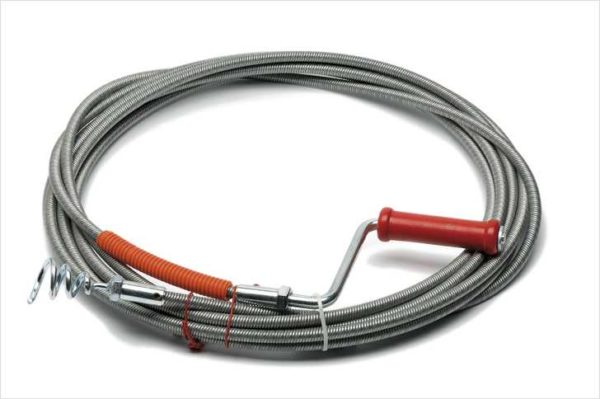
This is what a plumbing cable looks like. At home, it can be replaced by ordinary unannealed wire (flexible)
Some cables may have a replaceable attachment, while the simpler ones end in some one device. The handle is made in such a way that the handle remains stationary, and the cable rotates inside.
Using a plumbing cable is not difficult, but it is better to work with an assistant. You put on gloves, dirty clothes and start cleaning the sewers. First, provide access to the sewer pipe. You can remove one of the siphons, and in a private house it is better, when planning the sewage system, to provide for such a backup point for cleaning the sewer pipes.
The principle of "working with a cable" with a spiral or a hook at the end is to hook the plug that clogged the pipe and pull it out. It is unlikely that it will be possible to pull it out entirely at a time, but in parts it is real.
The cable is unwound, the end is launched into the pipe, and begins to rotate in one direction. The second person at this time pushes the cable through the pipe. If the cable is stuck in some area, you can pull it back a little, then try to push it again (we continue to rotate the handle). This is either another turn of the sewer, into which the end of the cable rested, or a blockage.Having tried to push it a couple of times, we pull out the cable. If there is a blockage at the end, it was a cork and you are on the right track. We clean the tip, run it into the pipe again and repeat the procedure until the pipe is clean. Not the most pleasant experience, but without it, some blockages simply cannot be removed.
There is another way - to make cable ends with rusty edges. They are able to pass the most difficult and dense blockages. Then the cork will not need to be removed in parts, but it will be possible to crush it and then wash it off. What tips can be made for a plumbing cable - in the video.
Cleaning the toilet with a plastic bottle
If you tried to clean the clog in the toilet with a plunger, you noticed that this method is ineffective due to the fact that the rubber part does not fit tightly, so the water almost does not move, there is almost no result. There is a more effective and, moreover, cheaper tool - a plastic bottle with a cut-off bottom. We take a larger vessel, cut off only the bottom, leave the lid closed.
We bring the cut bottle to the place where the toilet is bent, lower it into the water, and sharply move it down and up. At the same time, water movements are quite active. In the place of inflection, "waves" are formed, which gradually break the formed plug. This way to unclog the sewer only works if the plug is formed in the bend of the toilet bowl, if somewhere in the pipe, there is only one way out - cleaning with a cable.
First, you can try to punch through the drain hole of the toilet, but if it does not work out, you will need to dismantle the toilet and free up access to the outlet to the sewer (this is if there is no inspection hatch).

